Macrame Knots – Square Knot
One of the most important macrame knots is the square knot. I don’t think any other knot is used as often as this one. This may be because it is so versatile. You can use it to knot strands or even entire surfaces.
Table of Contents
Square Knots Basics
Sennits
Square Knot Basics
The simple square knot can be tied either to the left or to the right. Which direction you choose is entirely up to you. You will probably develop a preference at some point and only use one of these variants. It is important that once you have started with one version of a strand, you stick with it.
You need four strands for this knot. The two outer ones are the working cords (light-coloured cords), the two inner ones are the filler cords (dark-coloured cords). The filler cords are usually just lying around passively.
Left-Facing
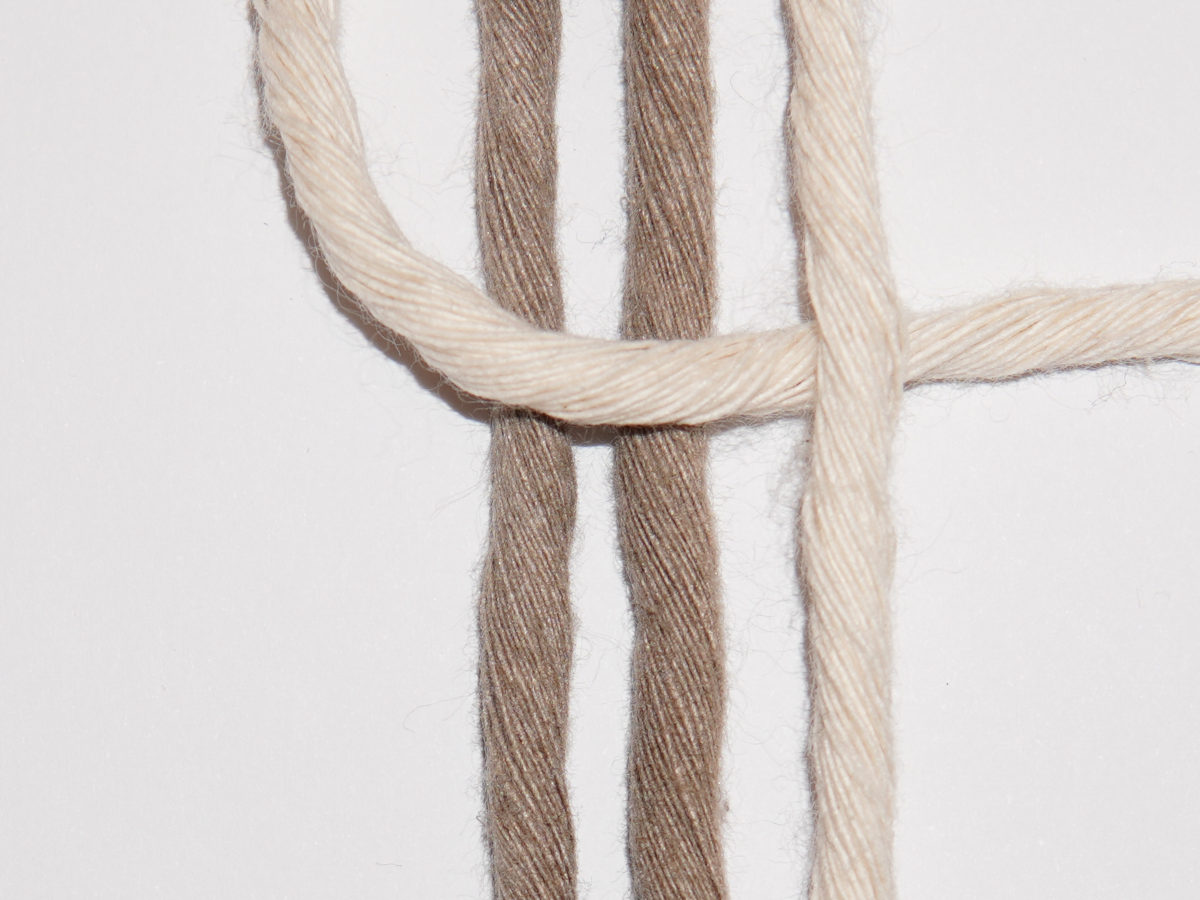
1
Start with the left working cord. First place it over the two filler cords and then under the right working cord.
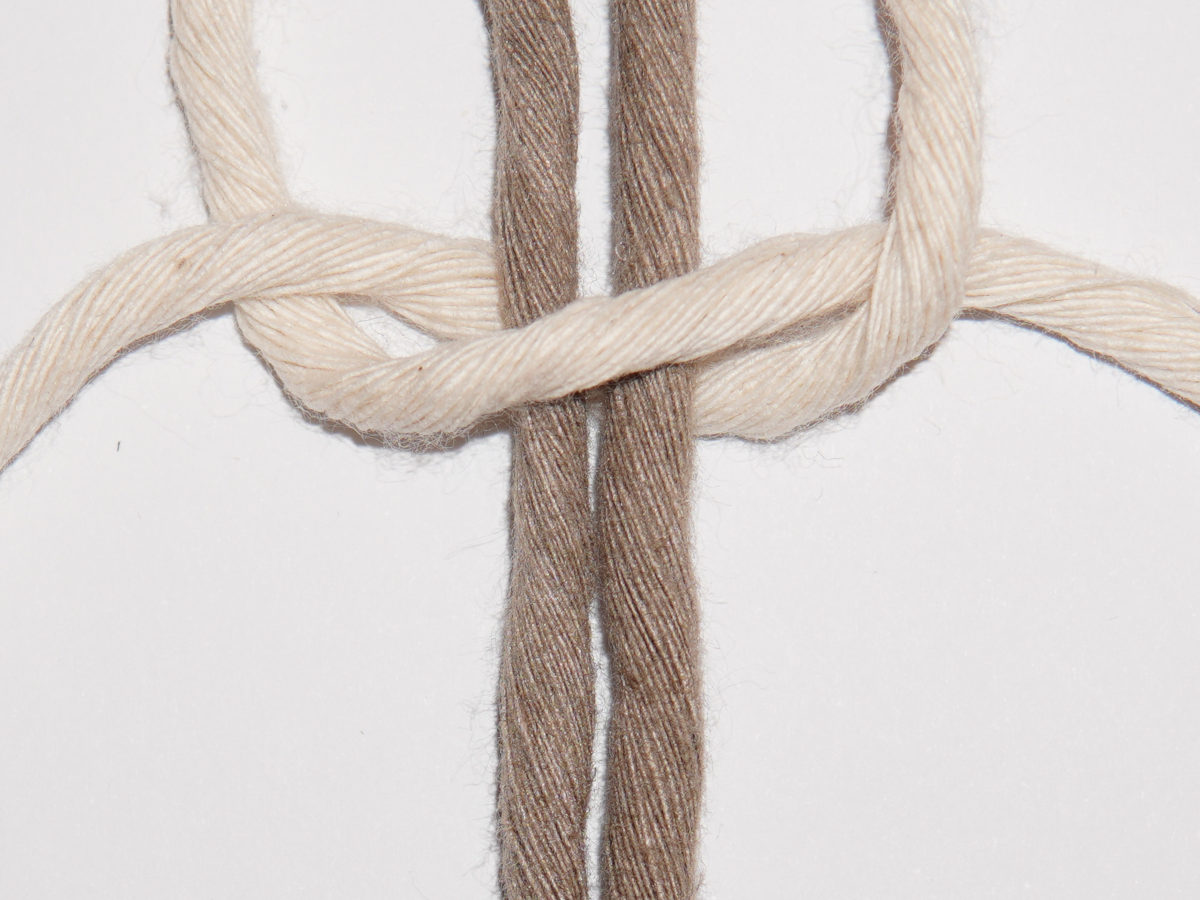
2

3
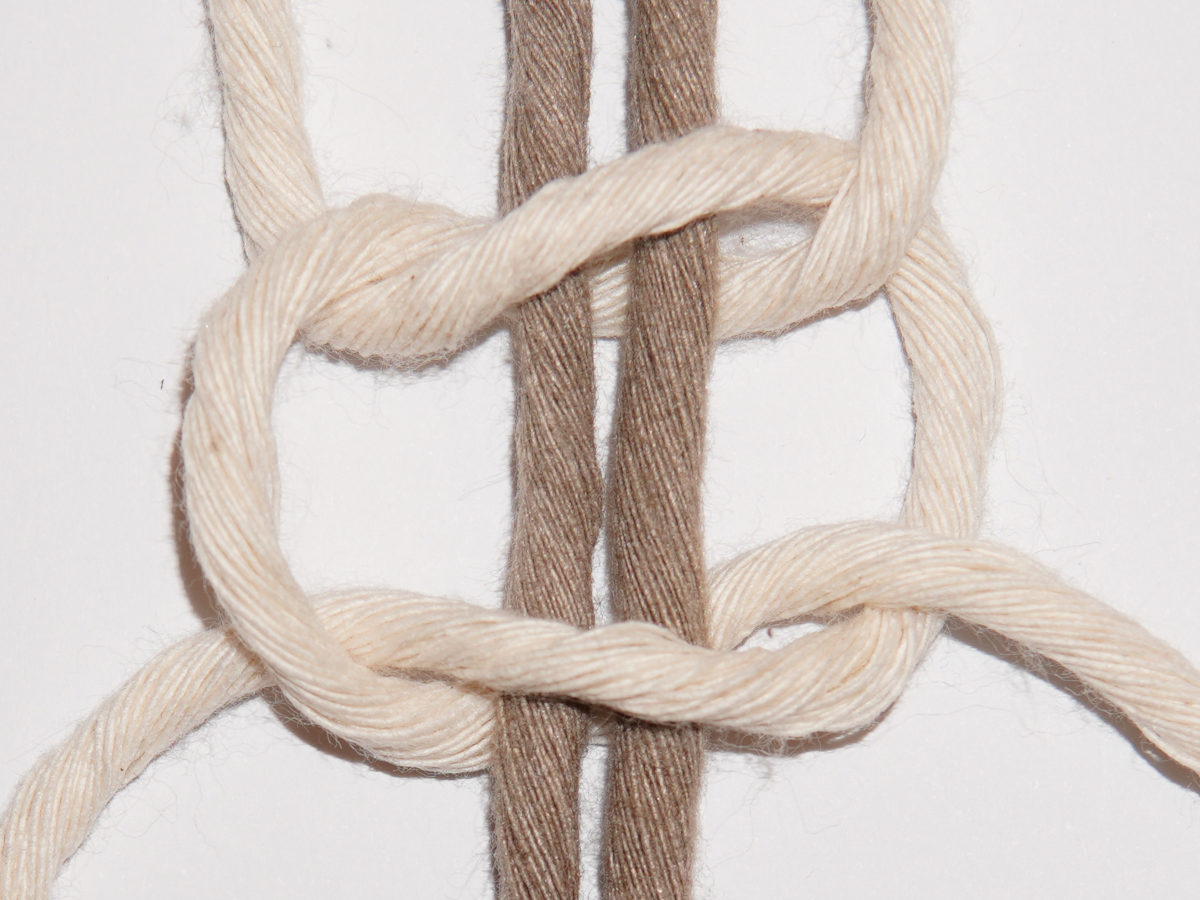
4
Then take the right working cord, place it over the two filler cords and guide it backwards through the loop of the left working cord.
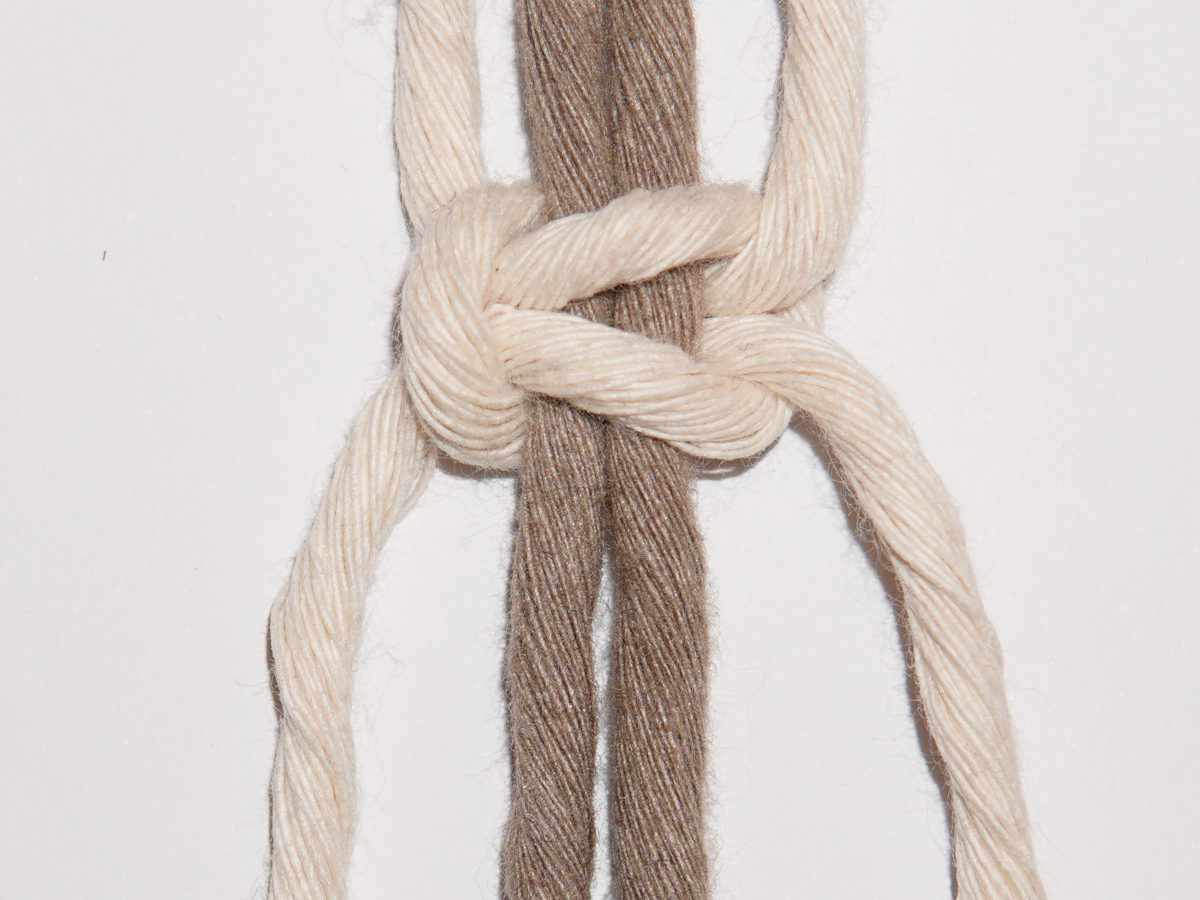
5
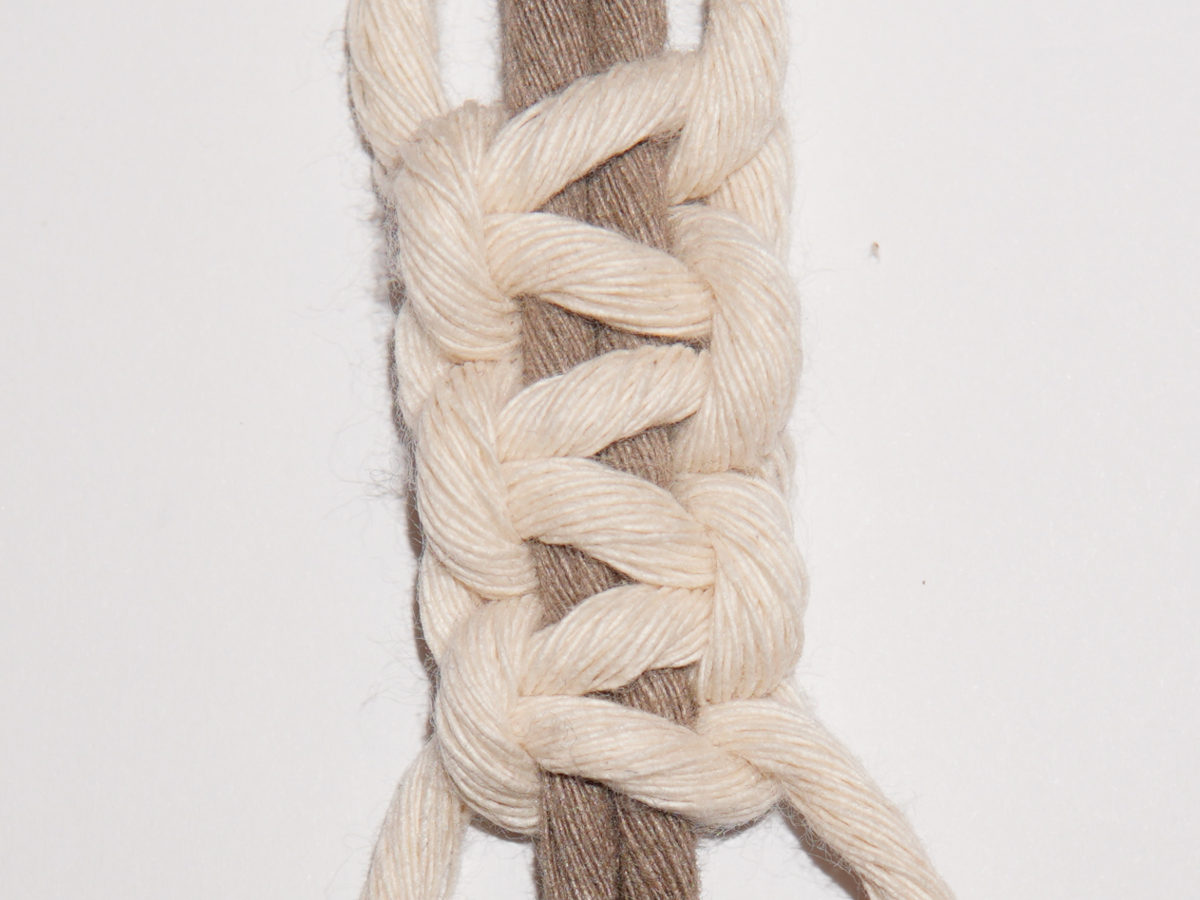
6
Right-Facing
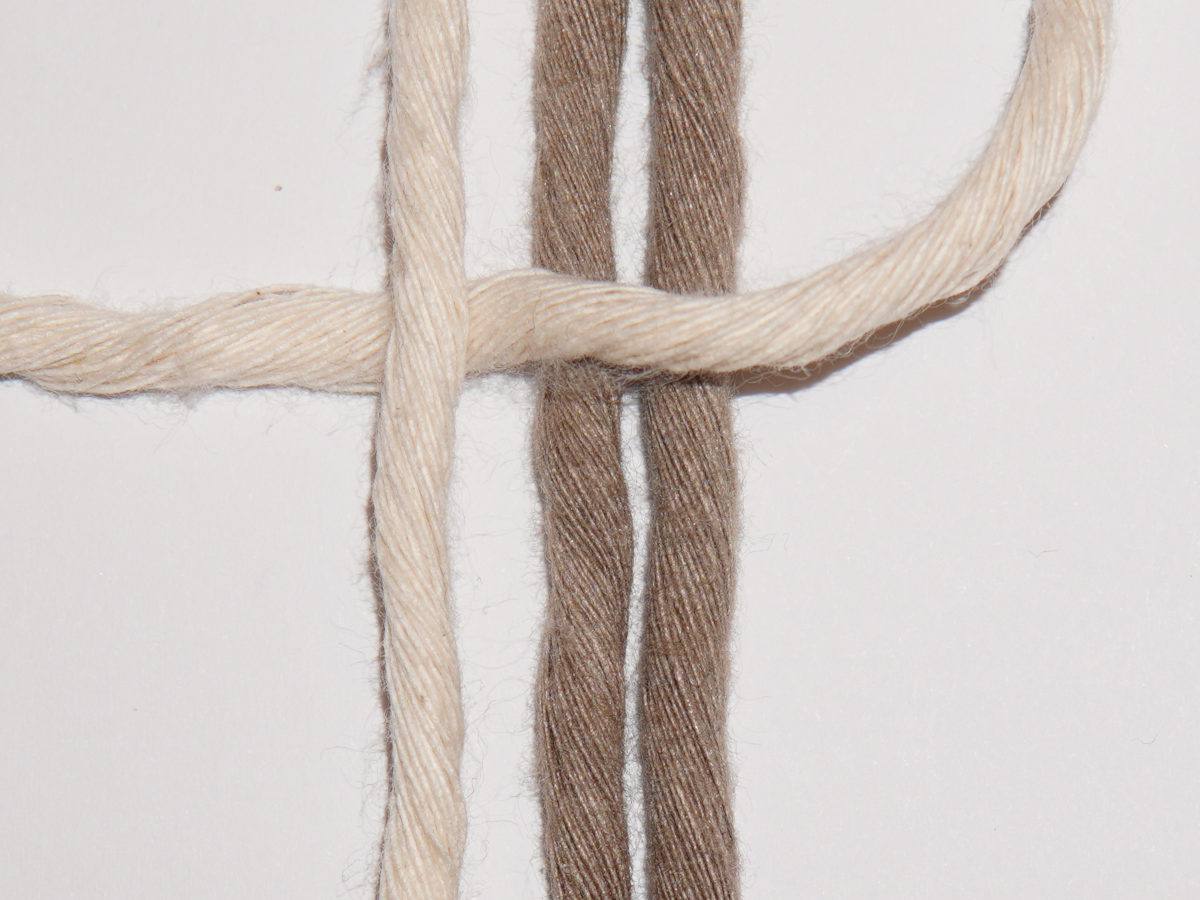
1
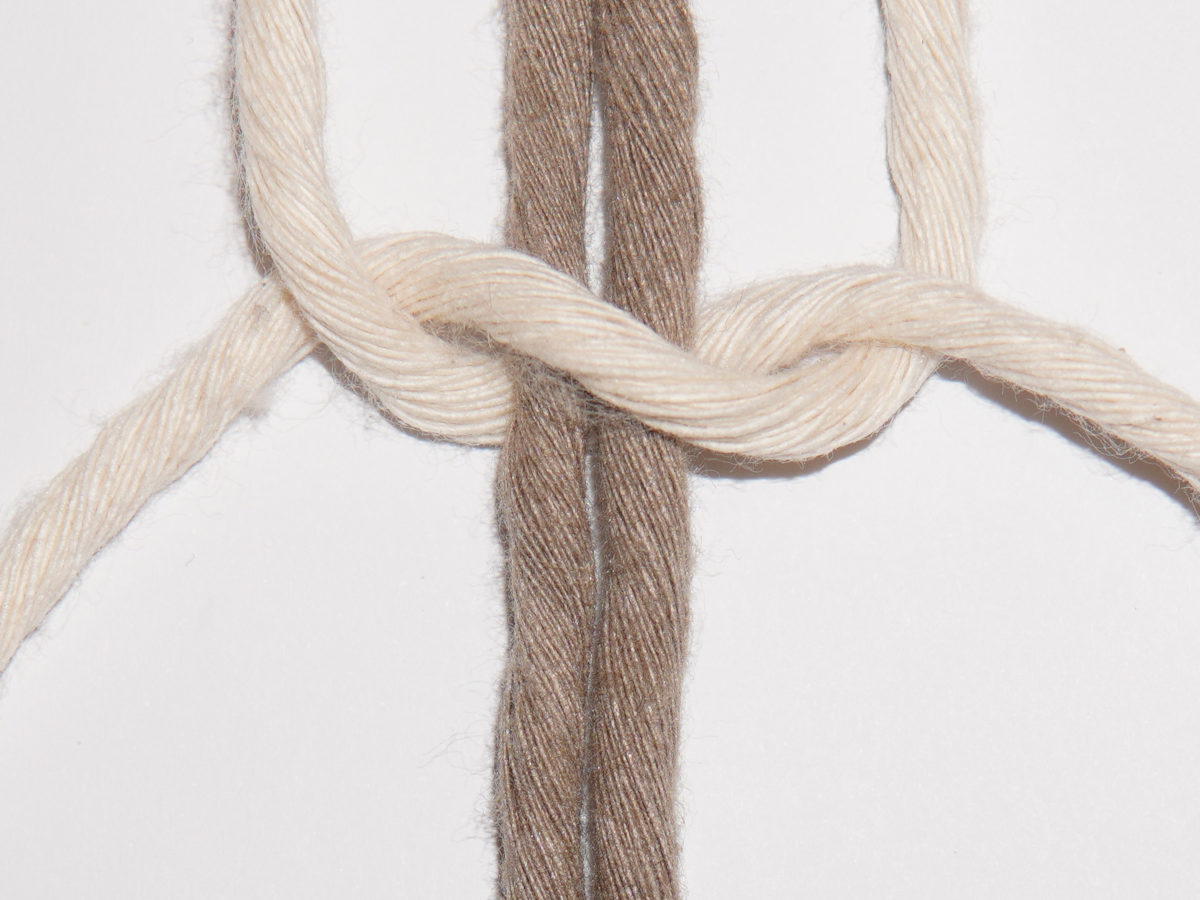
2
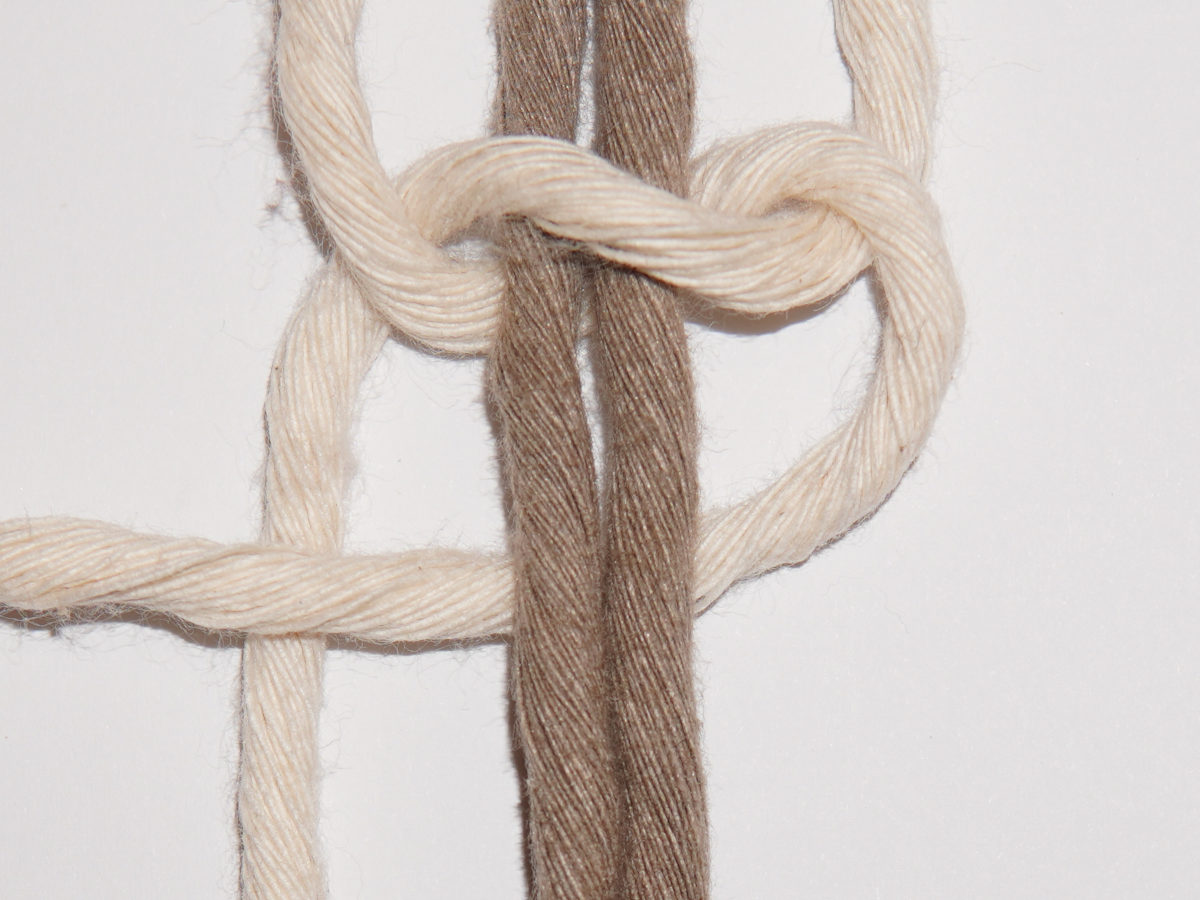
3
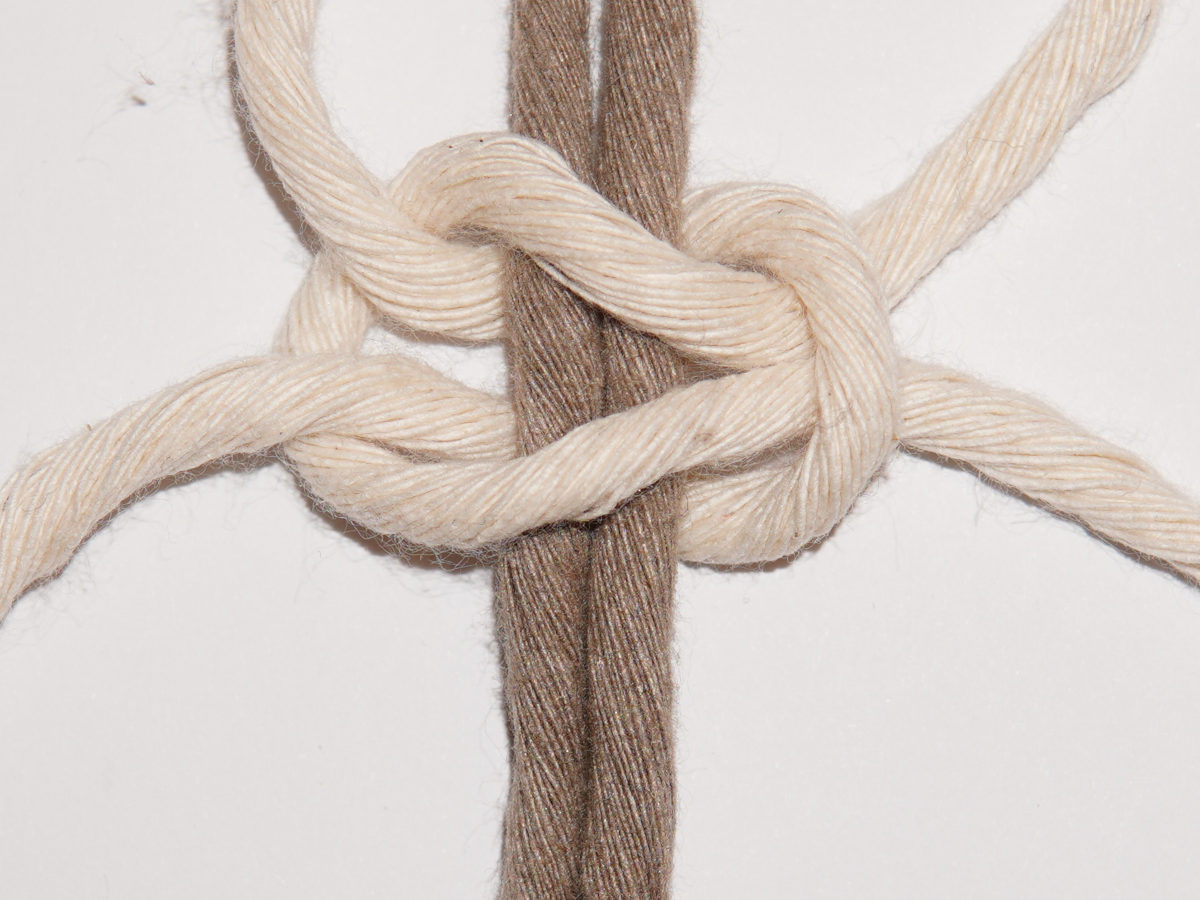
4
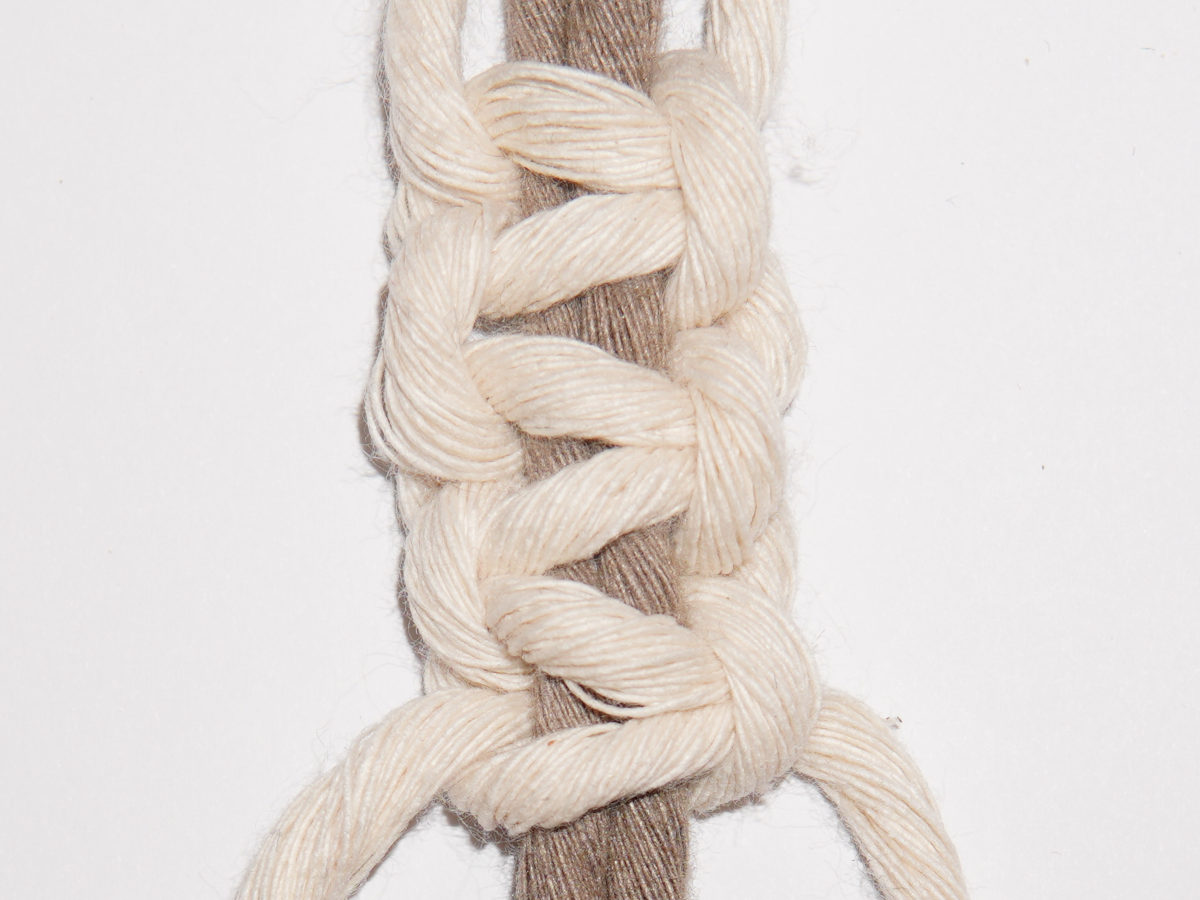
5
Sennits
You can also use different variations of the square knot instead of a normal strand so that it looks a little more varied and exciting.
Square Knot with Picots
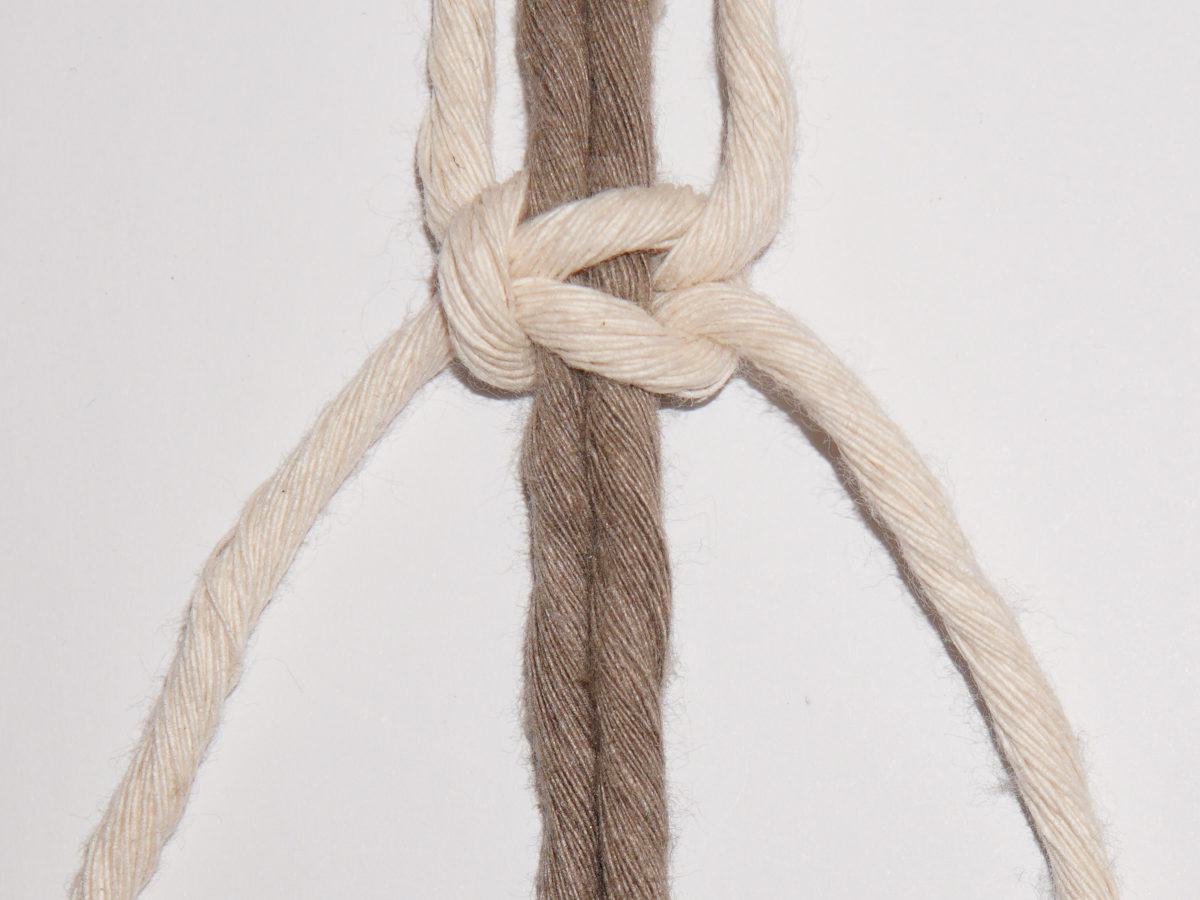
1

2
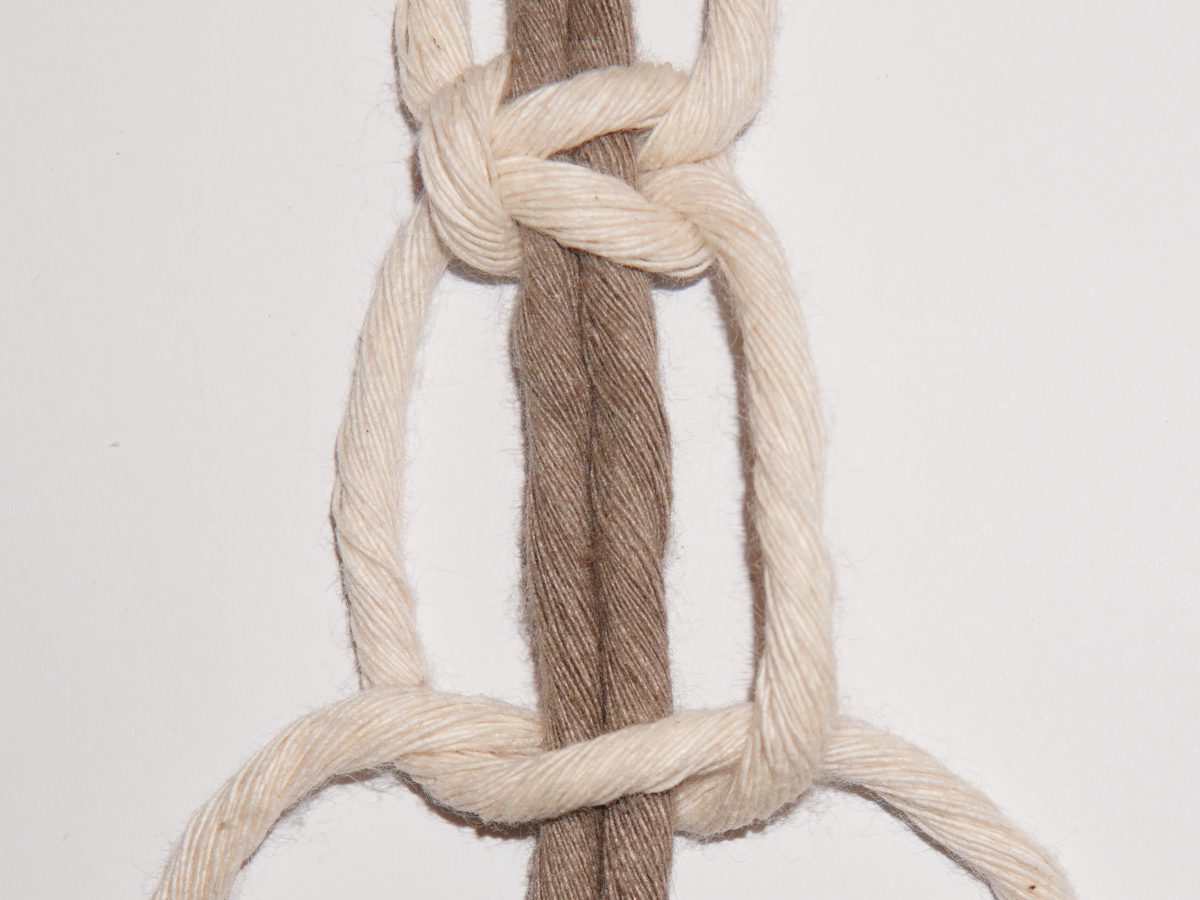
3
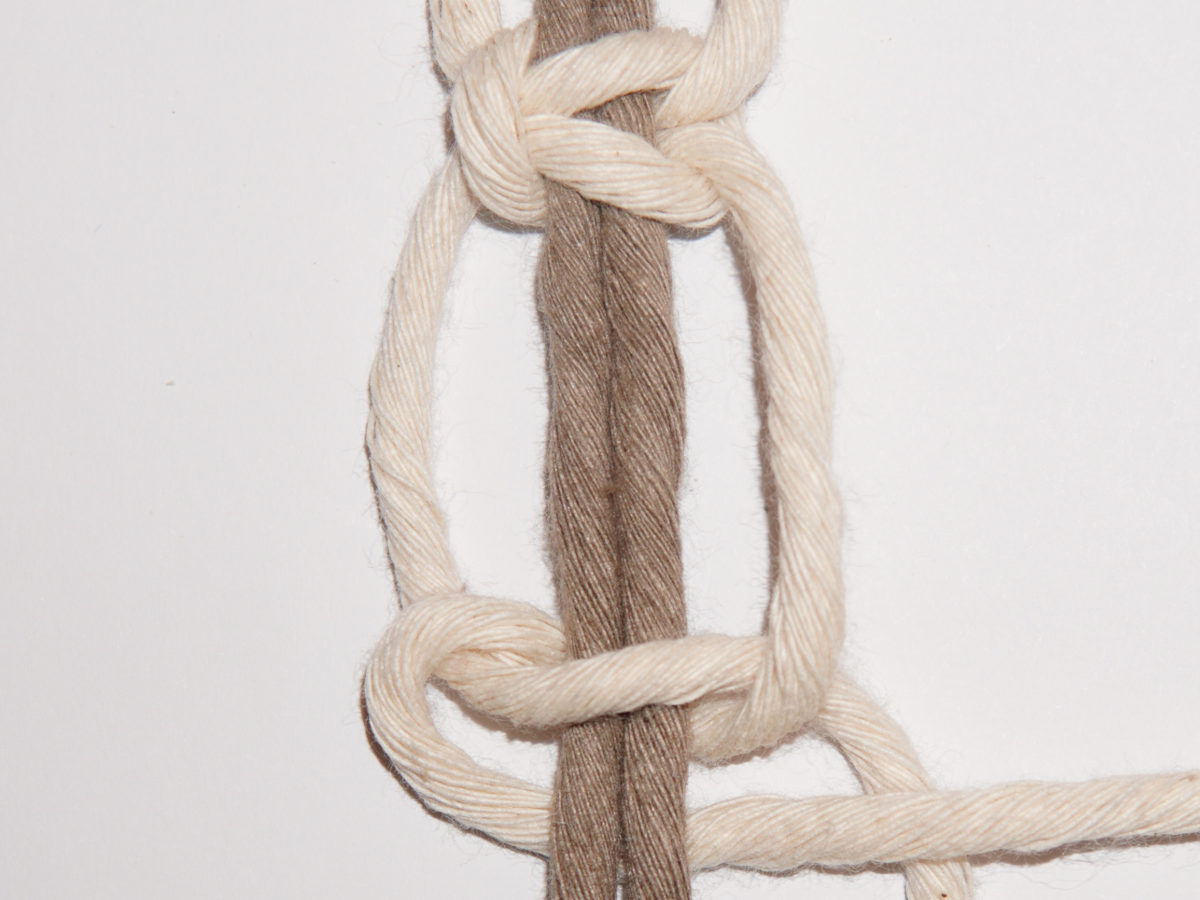
4
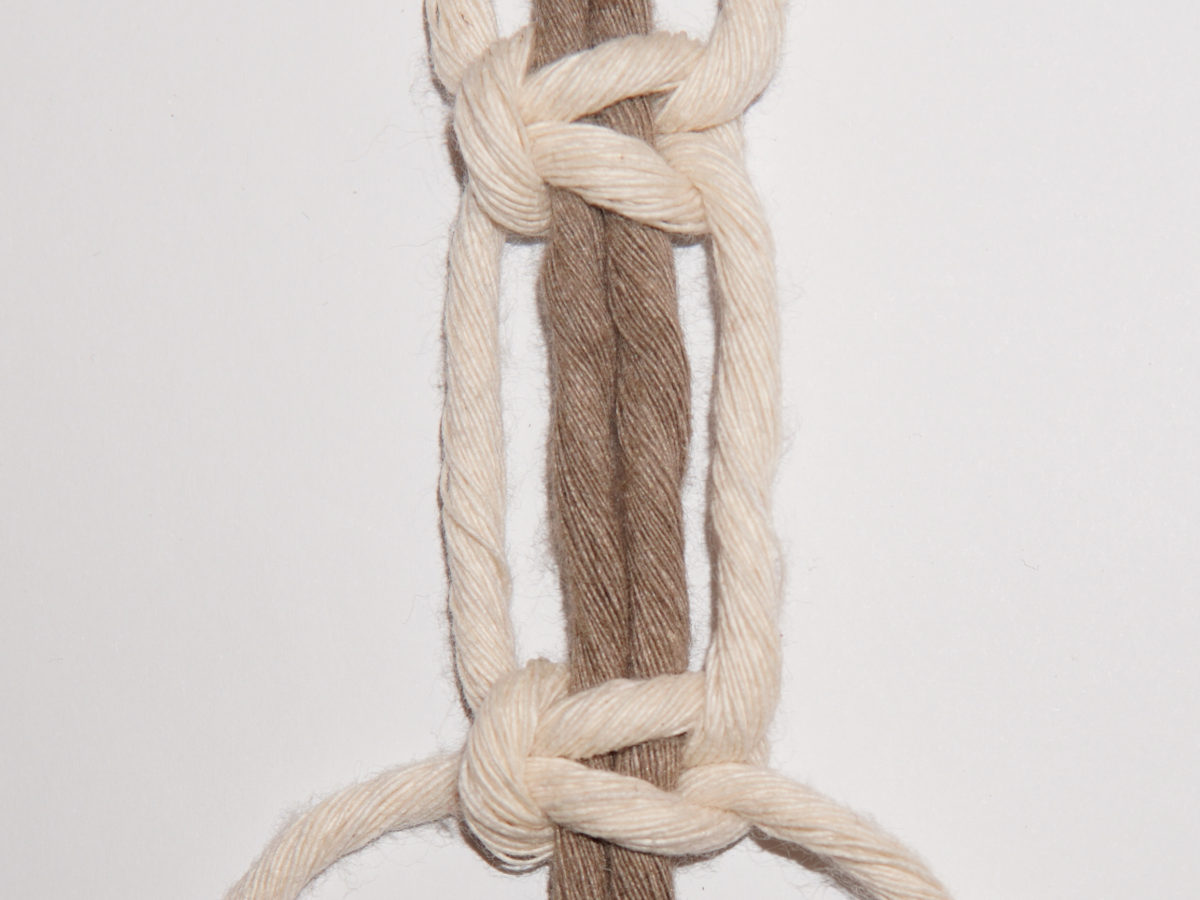
5
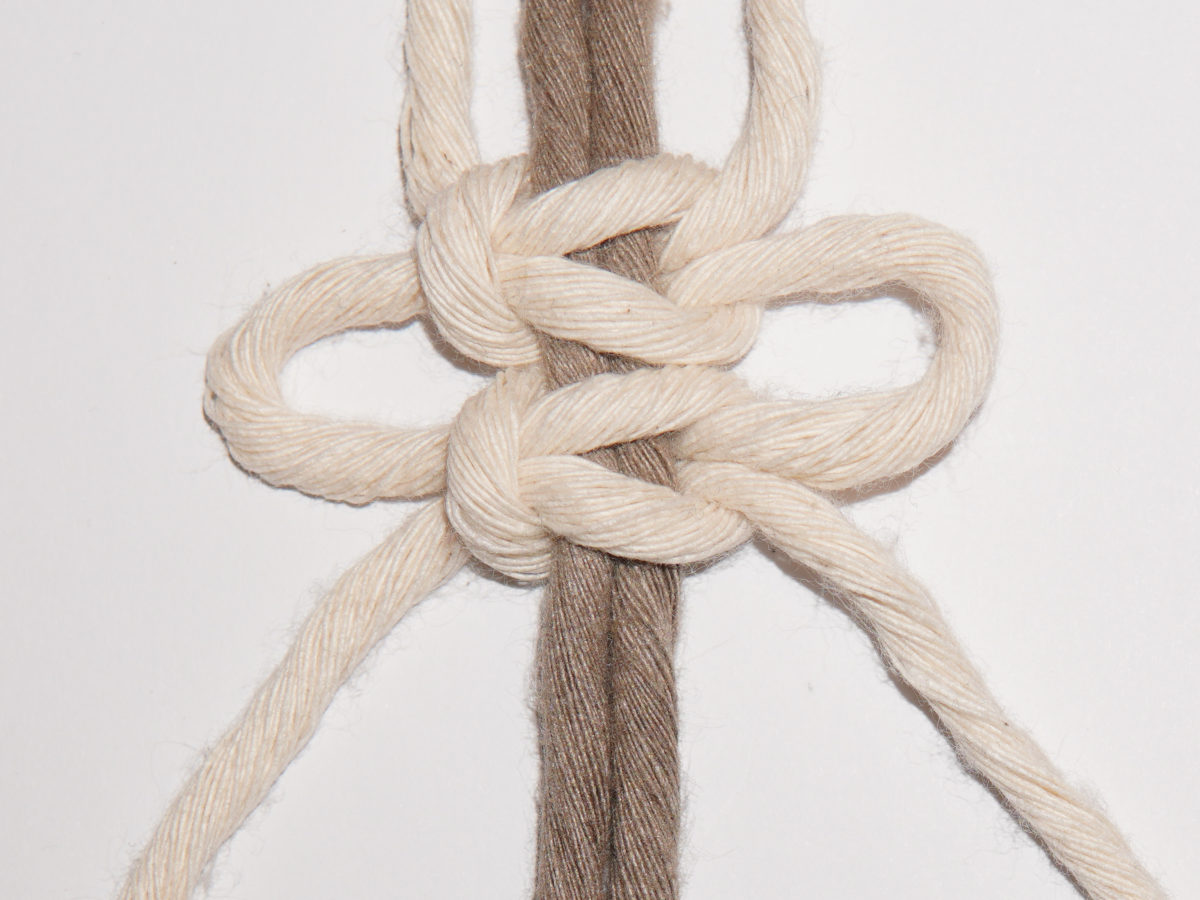
6
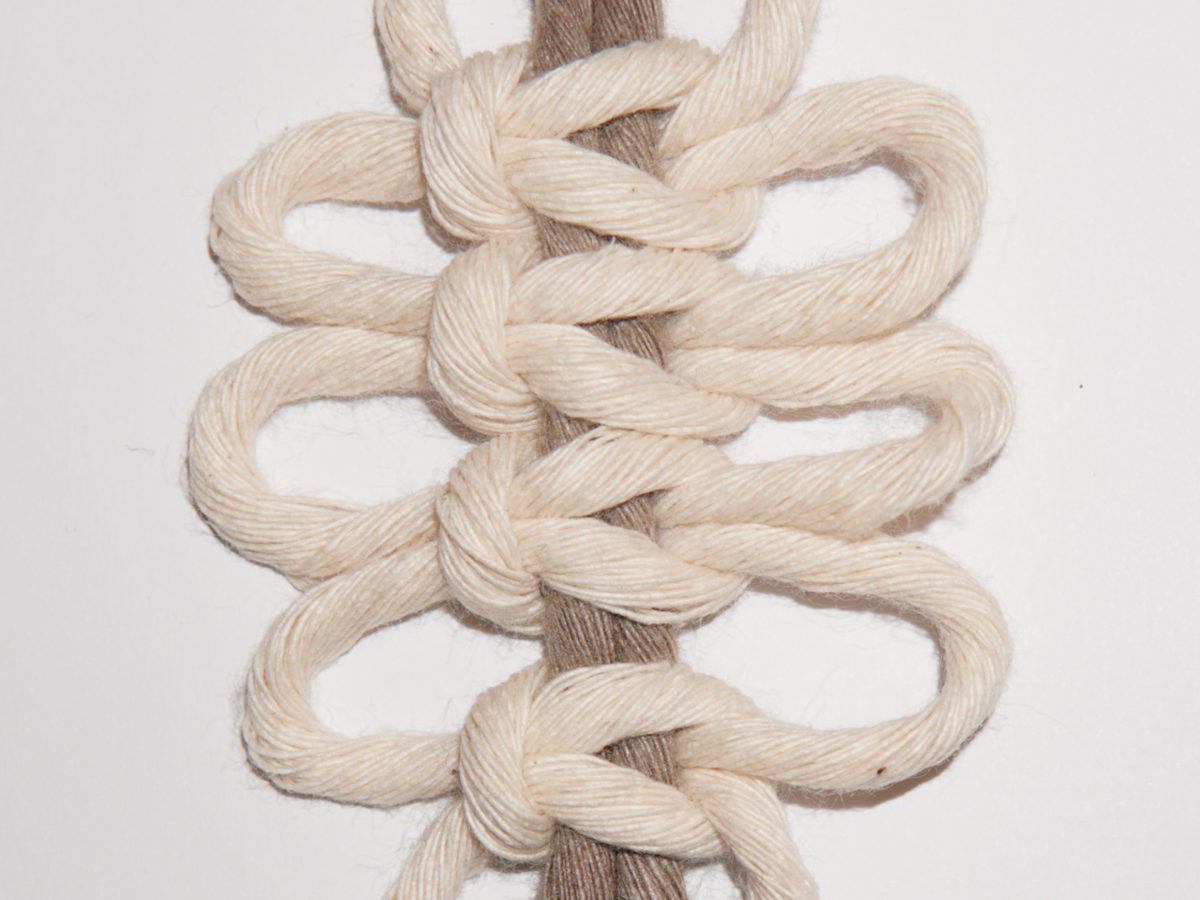
7
Square Knot Variation
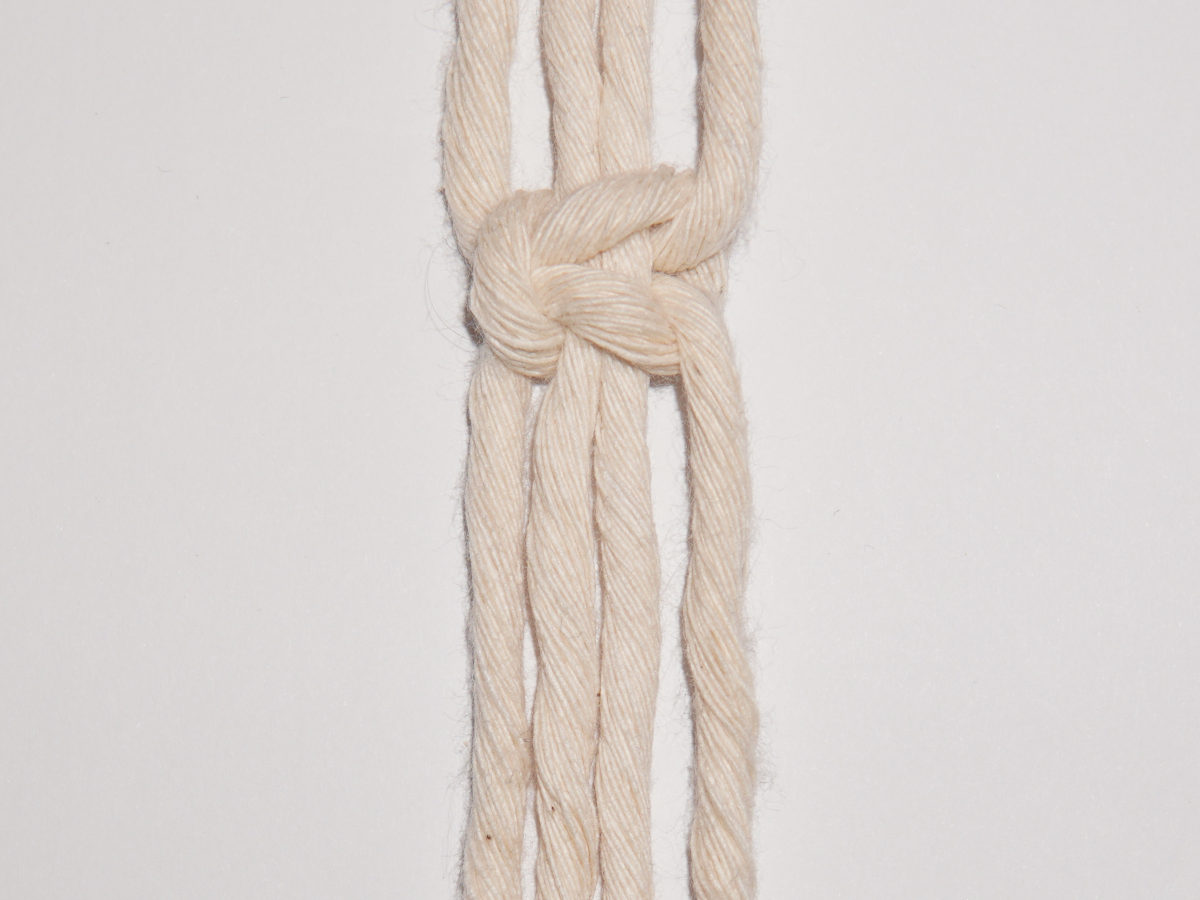
1
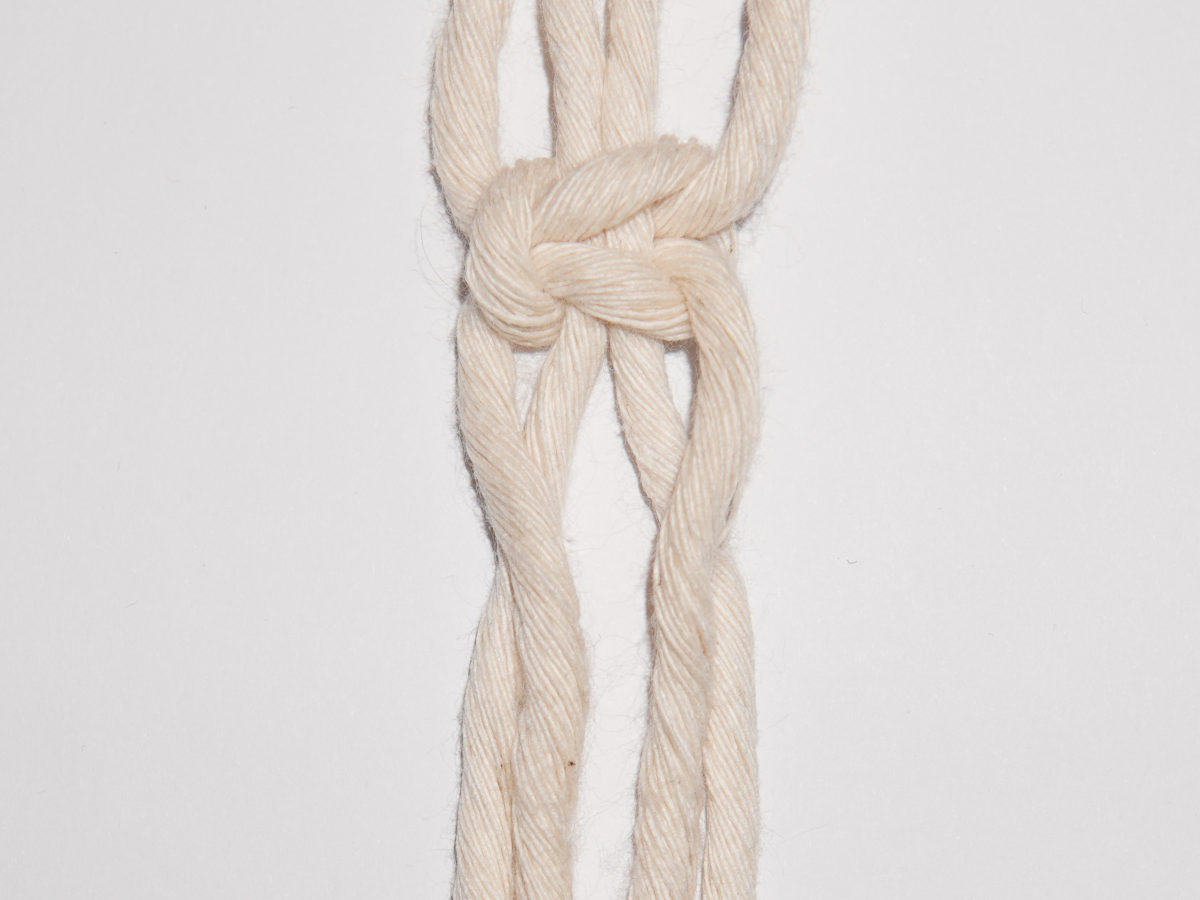
2
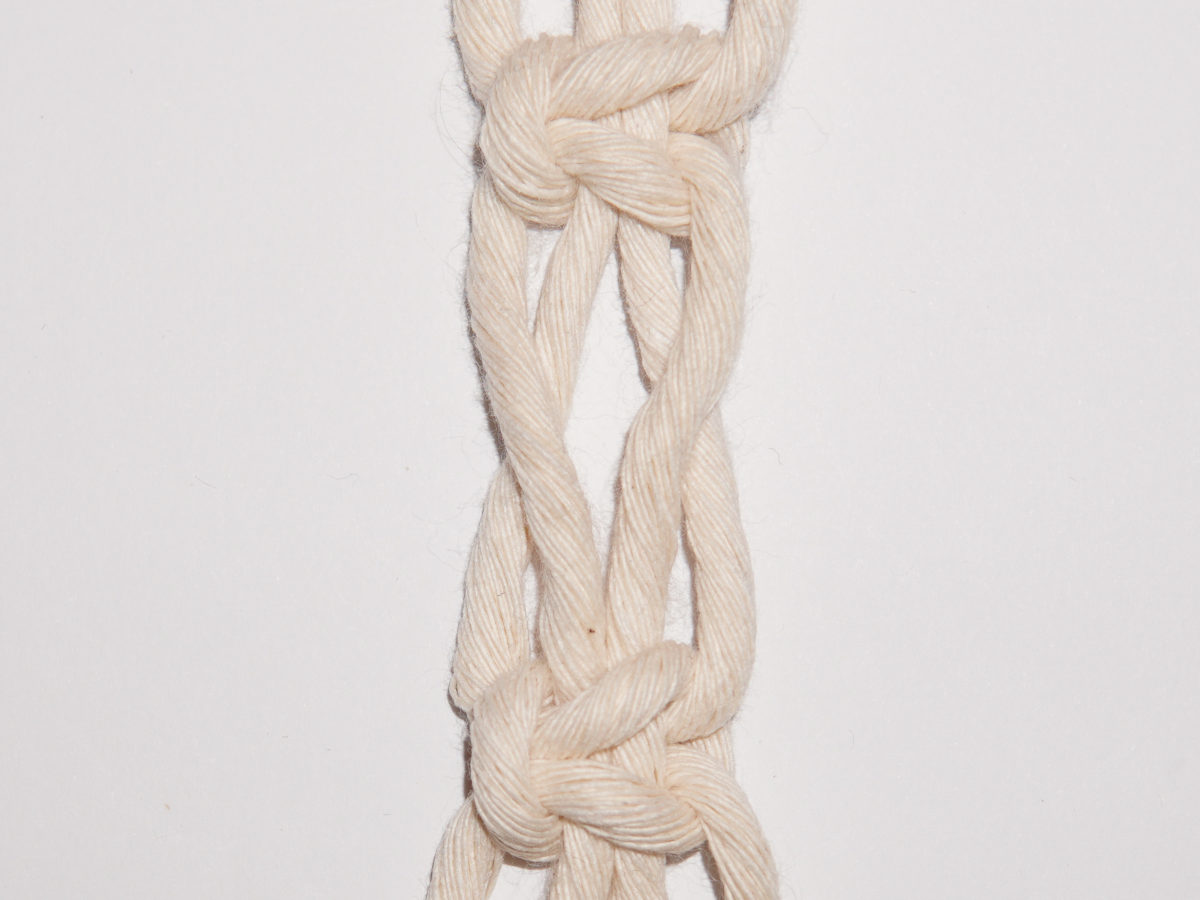
3
Alternating Square Knot
The alternating square knots work particularly well on larger areas. Basically, they are nothing more than several square knots that are tied next to each other and offset below each other.
Depending on how many square knots you want to have next to each other, you will need a corresponding number of strands. In this example, we are tying two knots next to each other and therefore we need 8 strands.
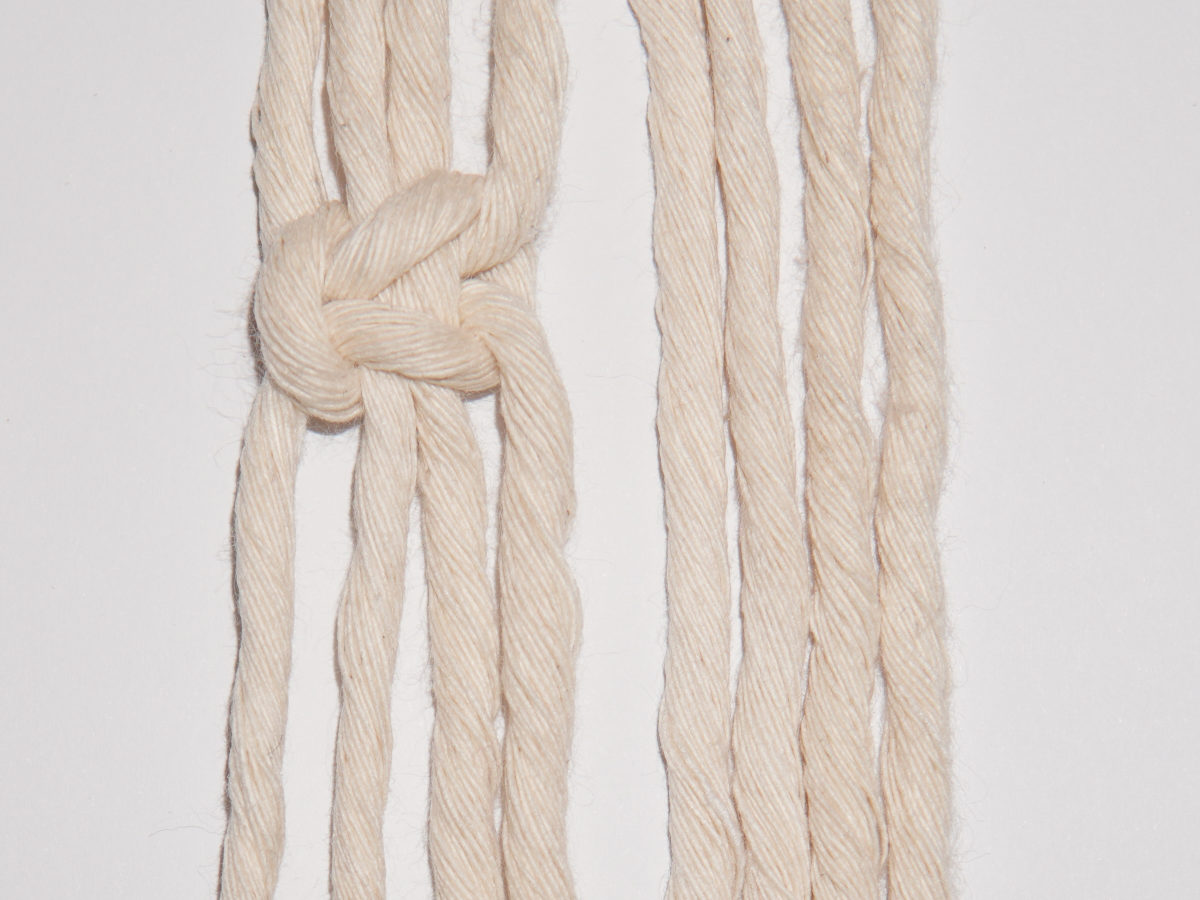
1
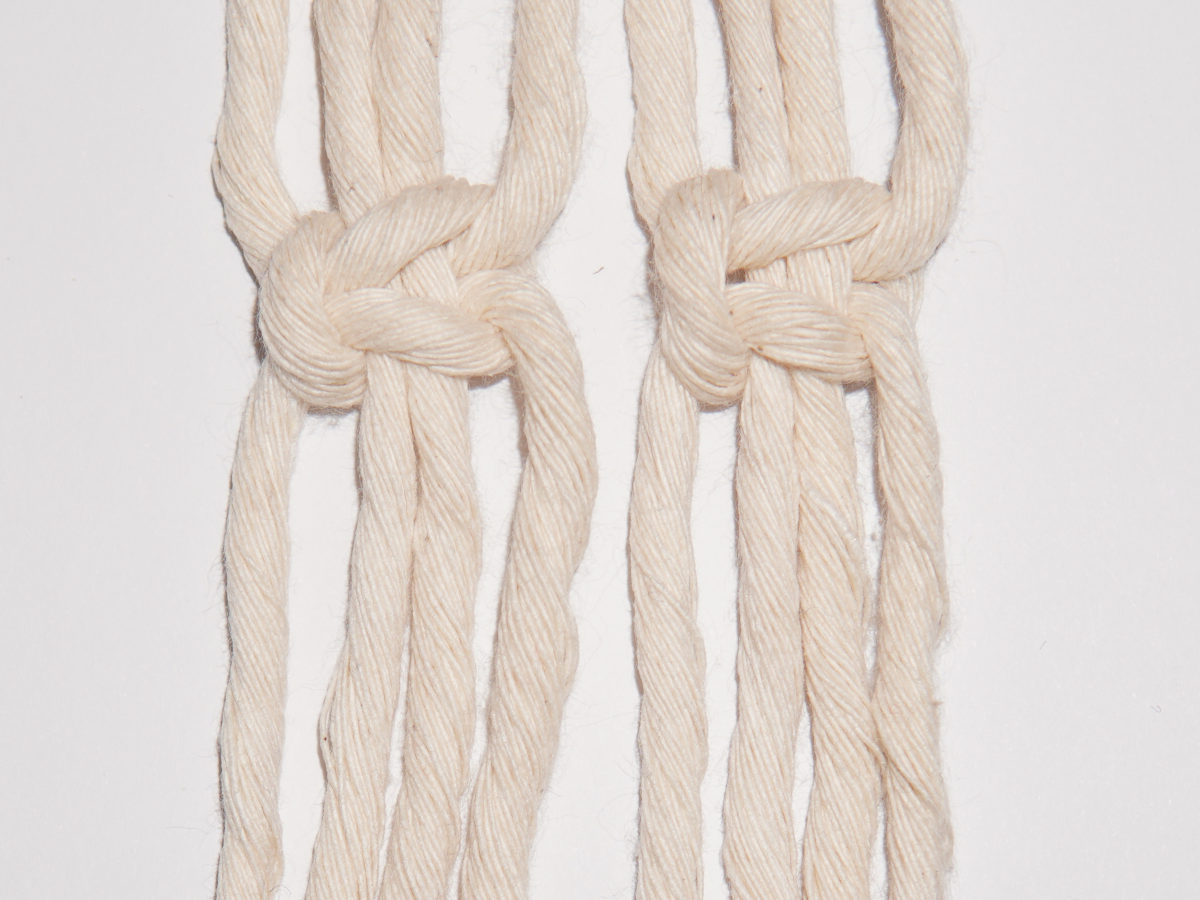
2
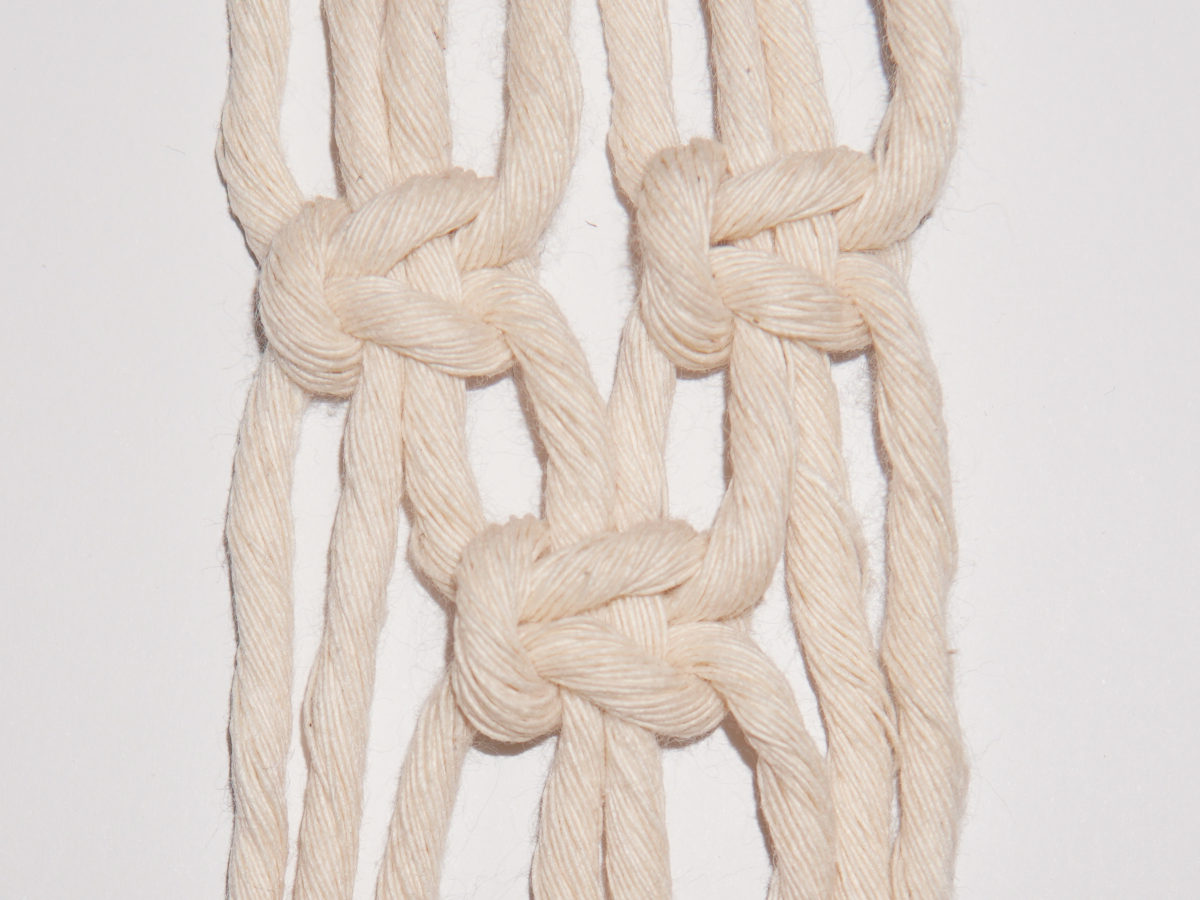
3

4
That’s it! Now you know the common variations of the square knot. If you don’t understand a step or have further questions, feel free to write in the comments.
Have fun knotting!
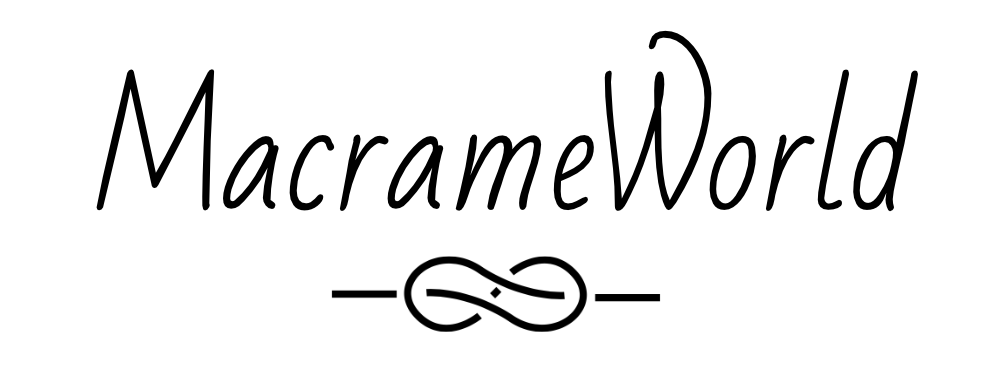
0 Comments